Madagascar Snake Species
Unlike other animals, there is very little information available about snakes in Madagascar.
Currently, there are 95 snake species in Madagascar, of which about ten, so only very few, are described. It is important to note that the endemism rate of snakes in Madagascar is very high.
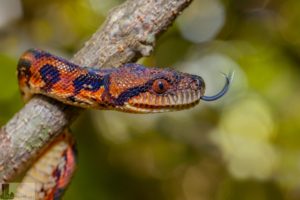 Only three species from the list below are not endemic.
Only three species from the list below are not endemic.
These snakes are not too aggressive, unlike in some countries, with a few exceptions.
Only very few are venomous, none.
One of them is truly known as dangerous to humans.
The most famous of the Malagasy snakes is probably the Boa Manditra.
Hydrophis platurus
Another snake species not listed below that sometimes roams the Malagasy countries is a venomous sea snake, the Hydrophis platurus, especially along the northern coasts.
This sea snake can grow up to 1 m long, it is a venomous and pelagic sea snake.
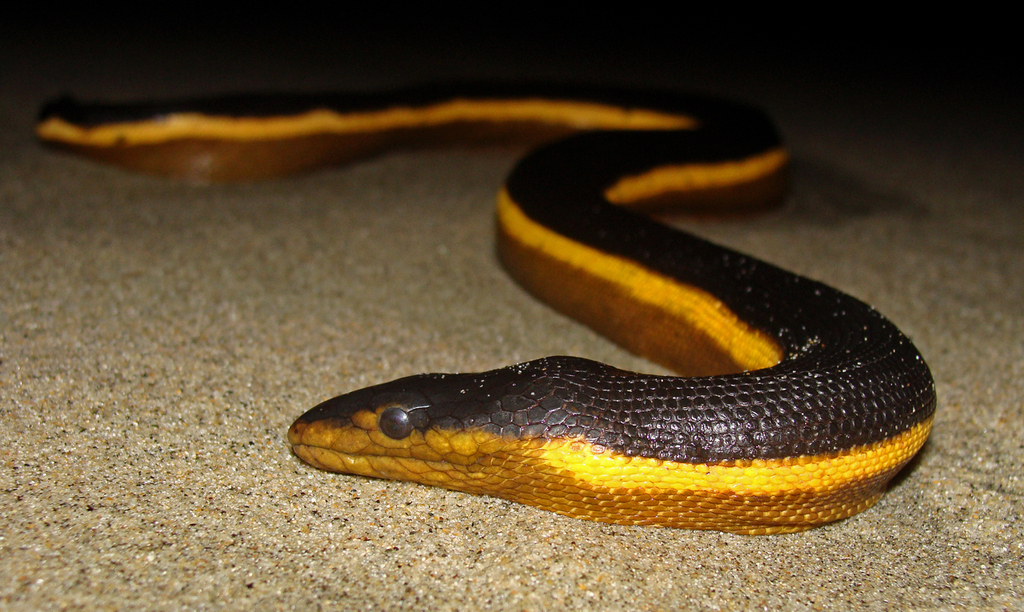 The body is laterally flattened (like some fish), with a black back and a
The body is laterally flattened (like some fish), with a black back and a
The black and yellow snake has a bright yellow belly.
The tail is usually lighter in color, with large black spots. It is viviparous.
Habits
This snake mainly feeds on small fish and larvae, which it hunts while lurking under floating objects.
The black and yellow snake is not aggressive towards humans and has no reason to attack: in case of an encounter, it will always prefer to flee rather than fight.
On the other hand, it will be able to defend itself if caught and threatened, by attempting a defensive bite that contains a more or less large dose of venom depending on the extent of the threat.
In large quantities, this venom can be harmful. dangerous to humans and can even be deadly in some cases.
However, accidents are still extremely rare: Apart from the low frequency of encounters and the fact that bites are almost never unprovoked, the mouths of these snakes are very small (suitable for eating small fish), and the opening width is often not enough to make a bite.

These snakes are highly adapted to their marine environment and play a crucial role in the ecosystem.
Dromicodryas bernieri, a widely distributed species that inhabits Western and Central Madagascar. Exceptionally, it can also be found in the eastern part of the island near Fenerive Est.
 Dromicodryas quadrilineatus
Dromicodryas quadrilineatus
The Dromicodryas quadrilineatus is also a very widespread species.
It is found in the northern part of Madagascar.
In the center, only the Alaotra region remains untouched. In the west, its distribution extends to Isalo and in the east to Fort-Dauphin.
Genus: Elapotinus
The genus Elapotinus has only one species: Elapotinus picteti, sometimes also described under another name 
It is a species that occupies a large territory in northeastern Madagascar, from the Amber Mountain in the north to Andasibe Mantadia.
Elapotinus picteti
It inhabits the humid forests of this region of the island, which are therefore far from the coastal areas.
Upper jaw very short, with five teeth gradually increasing in size and followed by a large, grooved fang after a gap.
The Heteroliodon genus is endemic to Madagascar. Heteroliodon occipitalis was the only species in the genus for over a century. Two other species have been described since 2005.
The Heteroliodon genus now includes a total of three species:
Heteroliodon occipitalis
Heteroliodon occipitalis, a species living in the east of Madagascar.
The holotype of Heteroliodon occipitalis measures 310 mm, with 70 mm of that length attributed to the tail. This species has a light brown dorsal surface with lightly bordered scales and two dark longitudinal lines. The upper and side parts of the head and neck are yellowish-white, while the underside is uniformly white. Its distribution range covers a coastal area from the Tsingy de Namoroka to Andohahela in the southeast of Madagascar.
Heteroliodon fohy, named after its “fohy” designation, is shorter than the other species in the genus. To discover a species classified as “endangered” living in the north of Madagascar, near the city of Diego Suarez, visit the Diego Suarez area.
Heteroliodon Lava
The Heteroliodon Lava is the longest among the “fohy” species. This is the significance of the word “Lava” in Madagascar. It can only be found in two locations on the island: in the Tsingy of Bemaraha and in the Tsingy of Ankarana.
Genus: Ithycyphus
The genus Ithycyphus is endemic to Madagascar. Snakes of the Ithycyphus genus are arboreal and can grow up to 1.5 meters in length.
The Ithycyphus genus comprises 5 species:
Ithycyphus goudoti
Leioheterodon modestus
Leioheterodon modestus, trouvé des deux côtés de la partie occidentale de Madagascar.
Genre: Liophidium
Le genre Liophidium comprend 10 espèces, dont 8 endémiques à Madagascar, dont une partage Madagascar avec les Comores.
Liophidium mayottensis, une espèce endémique trouvée sur l’île de Mayotte.
Les 10 espèces de Liophidium:
 Liophidium apperti
Liophidium apperti
Liophidium apperti, trouvé uniquement dans deux endroits, près de la ville d’Antanimieva en direction de Morombe et près de la ville d’Amboasary Atsimo.
Liophidium chabaudi
Liophidium chabaudi, vivant sur une petite bande côtière entre Morondava et Tulear.
Liophidium maintikibo
Liophidium maintikibo, trouvé dans l’est de Madagascar, entre Morondava et Belo-sur-Tsiribihina. Cependant, il y a eu des rapports de sa présence dans d’autres régions (non vérifiés).
Présence signalée dans la région de Port-Bergé et Ankarafantsika.
 Liophidium pattoni
Liophidium pattoni
Liophidium pattoni trouvé dans le nord-est de Madagascar. Sa zone de distribution est délimitée par deux réserves : Anjanaharibe Sud et Ambatovaky.
Liophidium rhodogaster
Genus: Madagascarophis
The genus Madagascarophis is endemic to Madagascar. It includes
4 Types:
 Madagascarophis colubrinus
Madagascarophis colubrinus
The Madagascarophis colubrinus is found almost everywhere, at low altitudes, near the coasts of Madagascar.
Madagascarophis fuchsi
The Madagascarophis fuchsi, which is only found on the French Mountain in northern Madagascar.
Madagascarophis méridionalis
The Madagascarophis méridionalis, which lives in a very large area in southwestern Madagascar.
Madagascarophis ocellatus
The Madagascarophis ocellatus, which is found in the coastal areas of southwestern Madagascar. Its distribution is limited by the Mikea Forest in the north and Andohahela in the southeast.
Genus: Micropisthodon
The genus Micropisthodon
Micropisthodon Ochraceus is endemic to Madagascar and is the only species in its genus. Its name, Micropisthodon (mikros / opisthen (back) / odous), comes from the fact that it has small molars. This animal can measure up to 7 meters in length.
Its distribution corresponds to a coastal strip in eastern Madagascar, reaching Marojejy in the north, Cape Masoala in the east, and Fort-Dauphin in the south.
Genus: Pararhadinaea
The genus Pararhadinaea is endemic to Madagascar and has only one species. Pararhadinaea melanogaster.
Thamnosophis stumpfii is found in the northeast of Madagascar, in Nosy-be and the adjacent region of Ambanja.
Genus: Mimophis
The genus Mimophis is endemic to Madagascar and has only one species, Mimophis mahfalensis, or the Mimophis of the Mahafaly people, a Malagasy ethnic group.
 Mimophis mahfalensis
Mimophis mahfalensis
However, the distribution range of Mimophis mahfalensis is not limited to
The Mahafaly region, located in the southwest, is home to a unique and diverse ecosystem.
It is actually found almost everywhere on the island, especially in the western part and in the highlands.
This species also has two subspecies: Mimophis mahfalensis mahfalensis and Mimophis mahfalensis madagascariensis.

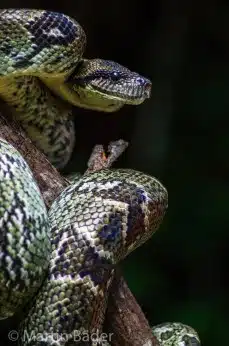
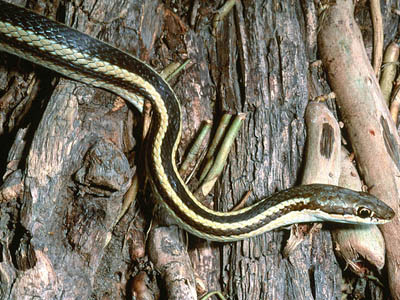 Dromicodryas quadrilineatus
Dromicodryas quadrilineatus Liophidium apperti
Liophidium apperti Liophidium pattoni
Liophidium pattoni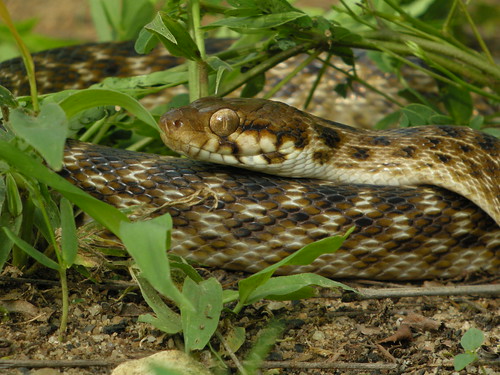 Madagascarophis colubrinus
Madagascarophis colubrinus
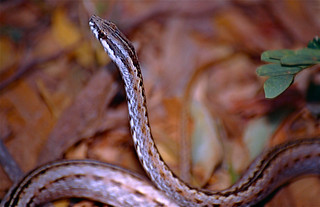 Mimophis mahfalensis
Mimophis mahfalensis




